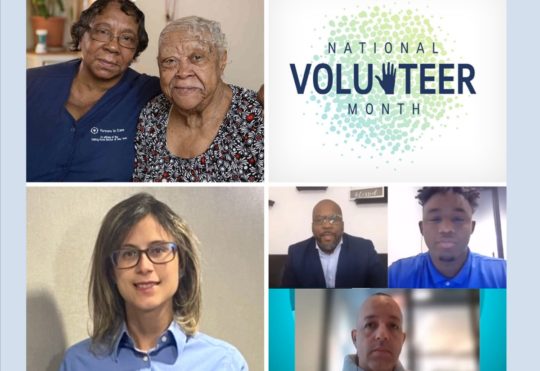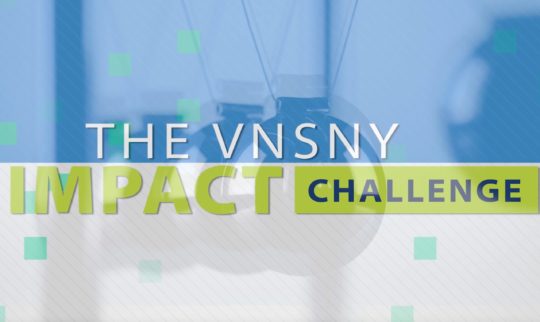Black History Month at VNSNY: Edith Carter, VNSNY’s Second African American Nurse
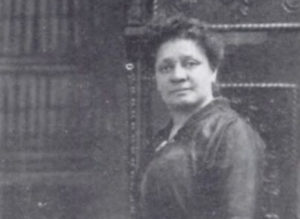 As part of VNSNY’s recognition of Black History Month, Frontline is featuring profiles of several pioneering African American nurses. Today’s profile spotlights Edith Carter.
As part of VNSNY’s recognition of Black History Month, Frontline is featuring profiles of several pioneering African American nurses. Today’s profile spotlights Edith Carter.
To read the profile of Elizabeth Tyler, VNSNY’s first African American nurse, click here. And to read the profile of Jessie Sleet Scales, the nation’s first African American public health nurse, click here.
The Frontline profile of VNSNY’s first African American nurse, Elizabeth Tyler, describes how Elizabeth helped found the Stillman House Settlement—a branch of VNSNY (known then as the Henry Street Settlement Visiting Nurse Service) on Manhattan’s Upper West Side. Elizabeth’s partners in the ground-breaking creation of the Stillman House were two other pioneering African American nurses, Jessie Sleet Scales and Edith Carter.
Edith Carter was the second black nurse to join VNSNY. She arrived at the organization in the spring of 1906, just three months after Elizabeth Tyler, to assist Elizabeth in caring for residents of Manhattan’s San Juan Hill neighborhood. Stretching from the West 50s up through the West 60s and from Eighth Avenue/Central Park West to the Hudson River, this diverse community was home to thousands of Black New Yorkers, including many who had emigrated from the West Indies, Central America, Cuba and South America.
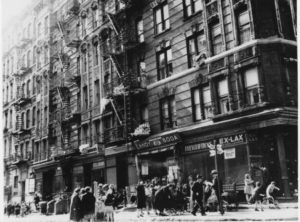 Like the tenement population of VNSNY’s first coverage area on Manhattan’s Lower East Side, many of these residents were living in crowded, unsanitary conditions. Faced with a community mortality rate of more than 5%—largely due to tuberculosis and pneumonia in that pre-antibiotic era—and an infant mortality rate of 2.5%, nursing historian Marie O. Pitts Mosley wrote, “these courageous, self-assured women assumed the monumental task of providing physical comfort, psychological support, health education and bedside care to thousands of Black infants, children, men, and women.”
Like the tenement population of VNSNY’s first coverage area on Manhattan’s Lower East Side, many of these residents were living in crowded, unsanitary conditions. Faced with a community mortality rate of more than 5%—largely due to tuberculosis and pneumonia in that pre-antibiotic era—and an infant mortality rate of 2.5%, nursing historian Marie O. Pitts Mosley wrote, “these courageous, self-assured women assumed the monumental task of providing physical comfort, psychological support, health education and bedside care to thousands of Black infants, children, men, and women.”
In December 1906, with the blessing of VNSNY’s founder, Lillian Wald, the two VNSNY nurses established a local presence in a small storefront in the West 60s together with Jessie Sleet Scales, who was primarily employed by the New York City chapter of the Charity Organization Society. Named the Stillman House after one of its philanthropic supporters, the new settlement—thought to be the nation’s first public health clinic established specifically for African Americans—was “a most gratifying and needed extension in the Visiting Nurse Service,” noted the American Journal of Nursing in an article published that year.
To make their task more manageable, Elizabeth was responsible for the upper half of San Juan Hill as well as other Black neighborhoods to the north, while Edith covered San Juan Hill’s lower half plus additional neighborhoods to the south. For Edith, who grew up in New Rochelle, New York, the work represented a considerable change in her professional life. As a young adult, she had devoted her time to caring for her ailing mother before deciding to go to nursing school at age 31—attending the same institution, Freedman’s Hospital Training School for Nurses in Washington, D.C., that Elizabeth had attended two years earlier. (Long associated with Howard University, the nursing school was formally transferred to the university in 1967 and became the Howard University College of Nursing.)
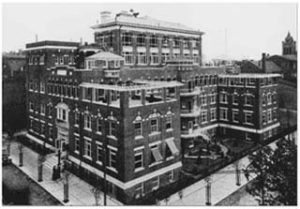
The Henry Phipps Institute in Philadelphia.
After graduating, Edith worked for eight years as a nurse at a hospital in her hometown of New Rochelle before moving to Manhattan to join forces with Elizabeth. In the years that followed, both their nursing practice and the Stillman House grew in size and scope. They soon relocated to larger quarters on West 62nd Street, where the settlement’s activities expanded to include classes, social clubs and a circulating library. In 1914, Elizabeth left to take a leading position at the Henry Phipps Institute in Philadelphia, a facility dedicated to treating African Americans diagnosed with tuberculosis. Meanwhile, Edith stayed on for two more decades with VNSNY in San Juan Hill, where she became legendary for her commitment to the community’s families.
As one VNSNY colleague from that period recalled, “To walk through this district with her makes you wonder how she ever gets to the homes to visit cases, for she is stopped every other step to give advice to some mother, talk to a child, or to pass the time of day with some old friend…. Families wait on their doorsteps to see Miss Carter as she comes down the block so they can ask her to call on a sick friend or visit a member of their family.”
During her 28 years at VNSNY, Edith also mentored the organization’s own expanding nursing staff and served as an influential role model to African American nurses throughout the U.S. Still, her focus never wavered from her, and VNSNY’s, main mission: Caring for her vulnerable neighbors. In the words of Edith’s VNSNY colleague, “To the families, Miss Carter is ‘Their Henry Street Nurse’ and the friend to whom they can take all their problems, knowing that she will somehow help them find a satisfactory solution.”
